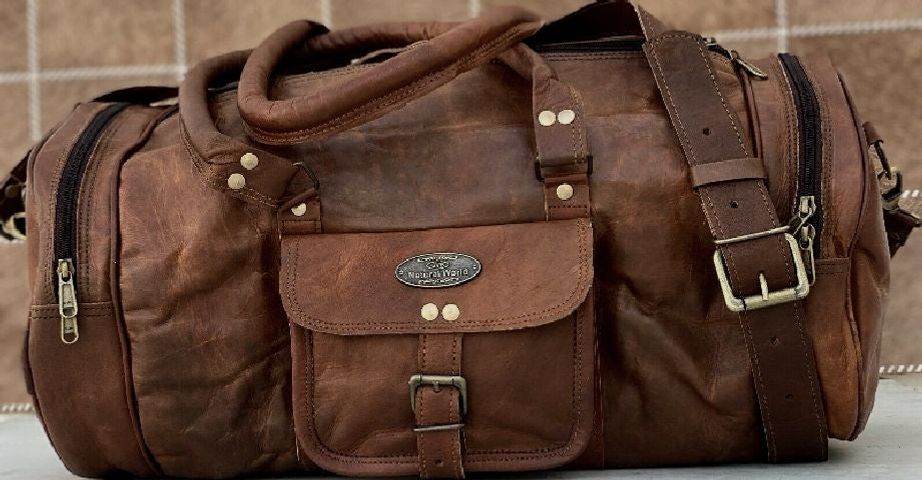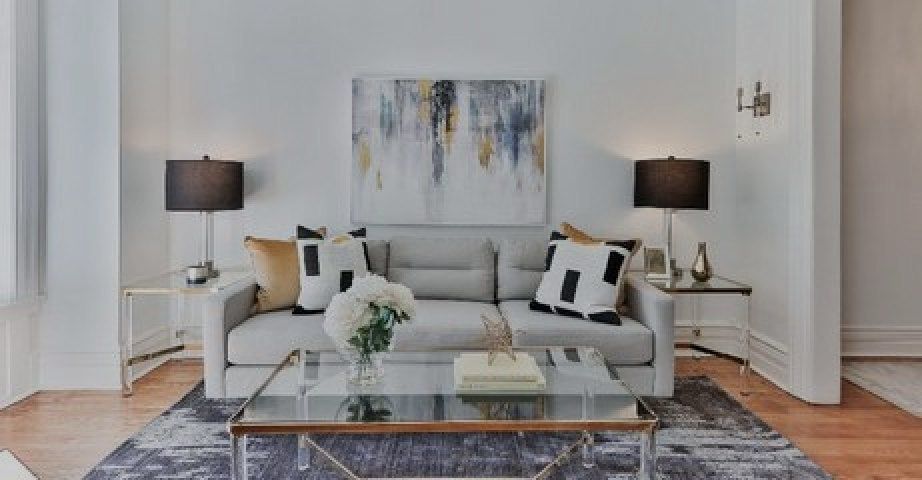Tech
How Listing Photos Impact Marketplace Performance

Why do leading marketplaces pay so much attention to picture quality on their listings? Amazon sets strict image requirements for sellers. Airbnb arranges professional photoshoots for their hosts. Approaches differ, but the understanding of how important visuals are unites all the top platforms.
Great imagery creates a great user experience, builds trust and facilitates transactions — all this is clear on an intuitive level. But is there any hard data to support those claims?
It turns out there is.
And in this post, we've put together a summary of relevant studies showing how exactly images affect marketplace performance. It will help marketplace executives make an informed decision on whether it's worth investing in improving photos on their platform.
Number, size and quality of photos impact conversions
A study based on eBay data, showed that both the number of photos and their size impact conversion rates.
At the time of the research (2014), eBay had 5 display options: standard, large, picture pack, slideshow, and 'supersize picture' (3 times bigger than standard).
Advanced display types with larger photos showed a significant boost compared to the standard one.
Conversion improvement for different display types:
- Large photo — 1.6x
- Picture pack — 1.57x
- Slideshow — 2.7x
- Supersize (3 times bigger than standard) — >2x
In terms of image quality, the average gap between top-rated and entry-level sellers is around 50 scores by the study's scale (0–255).
Besides that, the study reveals some other interesting findings:
- Image quality reliably predicts sales success in categories like apparel but less accurately in categories like electronics.
- Having at least one photo on the listing doubles the conversion rate. Having two photos doubles conversions again.
But adding more than two pictures didn't lead to further improvement. This outcome is consistent across all the categories and levels of sellers.
- Image quality on the listing is directly linked to how often it is visited.
- New buyers pay more attention to image quality as opposed to experienced ones.
The last fact hints that there's a link between image quality and how much people trust sellers and the platform itself.
Quality user-generated images invoke the most trust
Peer-to-peer marketplaces are especially volatile when it comes to image quality. This study investigates how exactly listing photos impact buyers' trust using data from eBay and LetGo.com.
Key findings:
- online shoppers trust high-quality user-generated photos more than poor-quality ones
- high-quality UGC outperformed stock images by a significant margin
Check the survey results in the graph below.
So finding a way to improve user-generated images is crucial for P2P platforms because higher trust inevitably leads to better engagement and more transactions.
A study performed on the data from China's largest social media/marketplace website supports the idea that product photos are strongly correlated with the number of likes and sales. Researchers found that users prefer images with a large, clearly visible main product, warm colors, high contrast and depth-of-field.
Buyers prefer platforms with standardized photos
This study shows that users prefer listings with photos regardless of image quality to text-only product pages.
But compared to low-quality UGC images, high-quality standardized photos contributed to:
- 10% higher purchase intent
- 26% better website design perception score
Luckily, with tools like Claid, you can allow sellers to take pictures of any quality and let neural nets handle standardization automatically.


Images are more important than reviews for experience goods
The following study analyzed 10,000 Amazon listings to compare how photos and textual information impact purchase decisions. Researchers rank-ordered factors from the most to the least important as follows:
1. Product photos
2. Textual information
a. Reviews
b. Product title
c. Product description
3. Other factors (price, rating, shipping cost, and brand) have roughly the same weight
The impact of images on a purchase decision is higher for search goods (like furniture) than for experience goods (like videogames). In the latter case, textual descriptions and reviews are more important, but photos still play a role.
Good photos increase demand on real estate and travel marketplaces
A study showed that one high-quality photo correlates with the same increase in renting price (14.5%) on Airbnb as a 3000-word written description.


Another study based on Airbnb's data found that properties with high-quality photos are booked 7% more frequently. This means that hosts can earn an extra $2455 a year if they use attractive photos on their listing (given their room is priced at $100/night).
A similar study shows that high image quality helps to generate 3.6% more demand, increasing hosts' annual revenue by $1445.
The measured benefit of high-quality photos goes as high as a 10.3% increase in demand for rental properties.
More stats on what matters for online shoppers
According to a study, 53% of online shoppers understand the main product function through images.
A paper from 2017 by B. Walker called "Consumer Psychology Behind the E-Commerce Checkout", shows that:
- For 90% of buyers, product visuals are the most important factor when making a purchase decision online.
- Offering multiple photos depicting a product from different angles leads to a 58% increase in sales regardless of the category.
According to a survey by Square and Bigcommerce, 78% of customers want more product photos when they shop online.
Most of the recent papers on consumer behavior mention product photos as one of the key factors affecting a purchase decision online.
Insights from Etsy
In Etsy's buyer surveys, 90 percent of shoppers said the photos’ quality was "extremely important" or "very important" to a purchase decision.
At the same time, 40% of new sellers on Etsy have said that product photography is difficult for them.
Another study based on 50,000 Etsy listings proved that image quality is a strong predictor of item popularity on marketplaces. Listings with quality photos have higher CTRs and are bookmarked and sold more often; with the most important image characteristics being clarity, clean background, vibrance, brightness, contrast and composition.
How improving photos enabled Airbnb to scale
In its early days, Airbnb struggled to get traction in New York. The team had a meeting with Paul Graham to figure out the reasons. The company's CPO, Joe Gebbia, recalls:
"We noticed a pattern. There's some similarity between all these 40 listings. The similarity is that the photos sucked. The photos were not great photos. People were using their camera phones or using their images from classified sites. It actually wasn't a surprise that people weren't booking rooms because you couldn't even really see what it is that you were paying for."
Graham suggested to founders to go to New York and reshoot those properties with a high-resolution camera.
Replacing photos instantly doubled the revenue in the city.
👉 Read on our blog: How to Scale a Marketplace: 4 Elements of Rapid Growth
Later Airbnb replicated the success in other regions. The impact was immense: 40% increase in earnings for listings with professional photos. The company eventually hired an entire fleet of 1000+ professional photographers and started to offer free photoshoots to their hosts.
How to optimize images for better performance of your marketplace
Photos that sell and engage have a few things in common:
- High resolution, necessary for a clear view of the product and (preferably) the ability to zoom in.
- Clean background that doesn't distract from the product
- Vibrant but natural colors, high enough brightness and contrast
The good thing is, marketplaces can have control over the quality of listing photos. There are 3 main approaches to improving imagery:
- Pay for professional photoshoots and post-processing, sending photographers to each vendor. Although this approach leads to a way higher quality of visuals, it's not really scalable due to the high cost and time needed for manual work.
- Publish without an image. The downside is that imageless listings simply don't convert. This is supported by both our experience talking to marketplace executives and studies in this post.
- Reject listings with bad photos, which leads to a limited supply.
The alternative is to leverage AI-powered tools like Claid.
Claid can upscale, clean compression artifacts, remove backgrounds, fix lighting and much more.


Claid restored quality, increased resolution, removed background and fixed colors of a user-generated product photo
With Claid there's no need to spend resources on manual editing. Your users can simply upload pictures of any quality — even if they were made in a messy setting with an iPhone — and Claid will enhance every image that doesn't meet your requirements on the fly.
Schedule a demo and see what Claid can do for your business
Listing photos are one of the most important factors affecting conversion rates and the number of transactions on your marketplace.
If your supply is presented by small businesses and regular users, chances are the quality of photos they provide can be substantially improved. And that's where Claid can help you. It will automatically treat bad photos and make them meet your requirements, leading to more conversions and sales on your platform.

Claid.ai
October 25, 2021